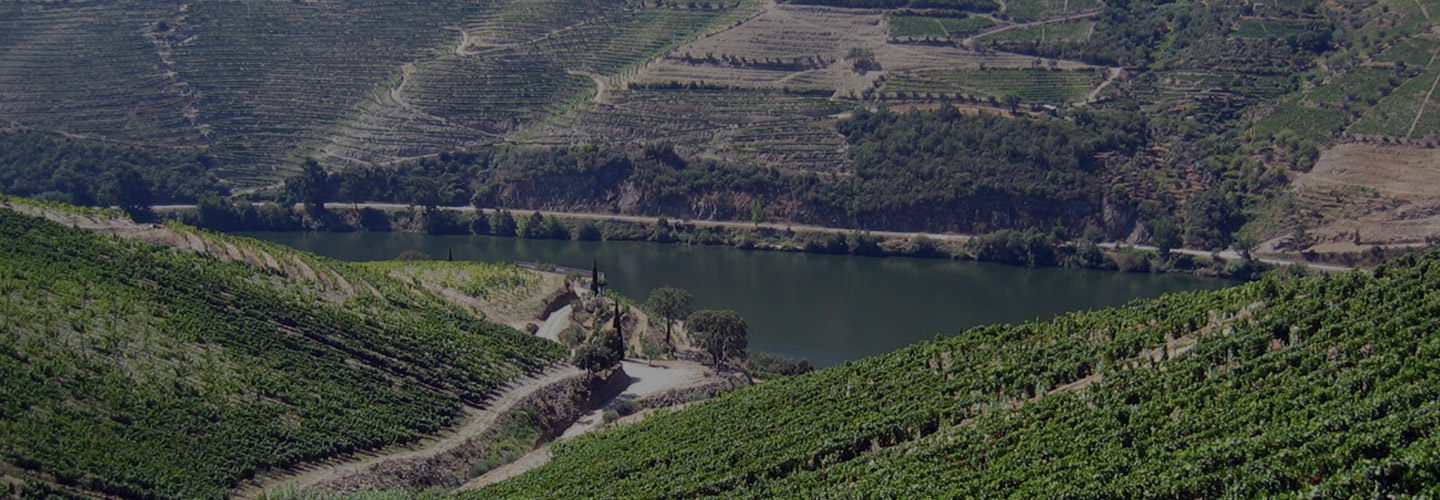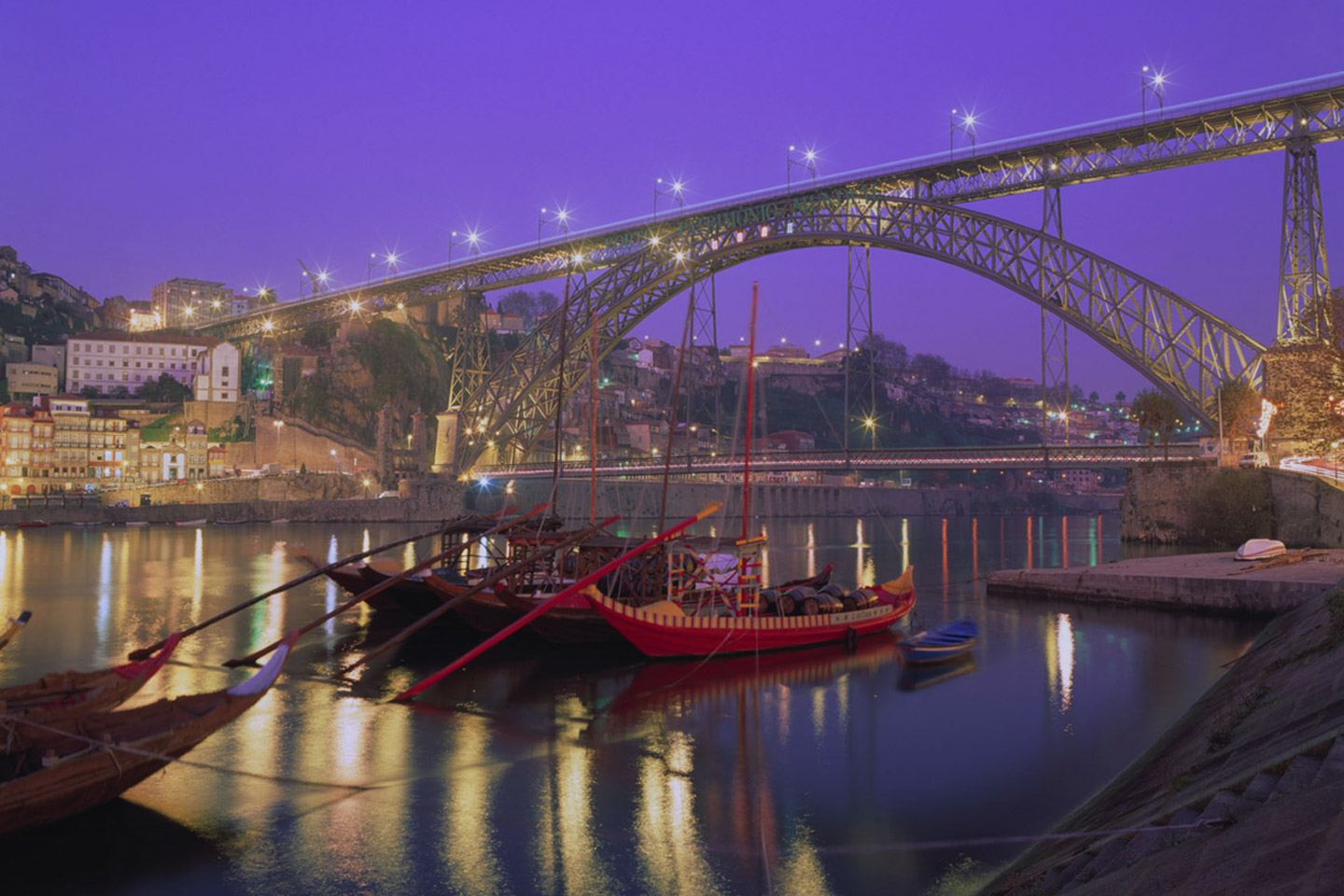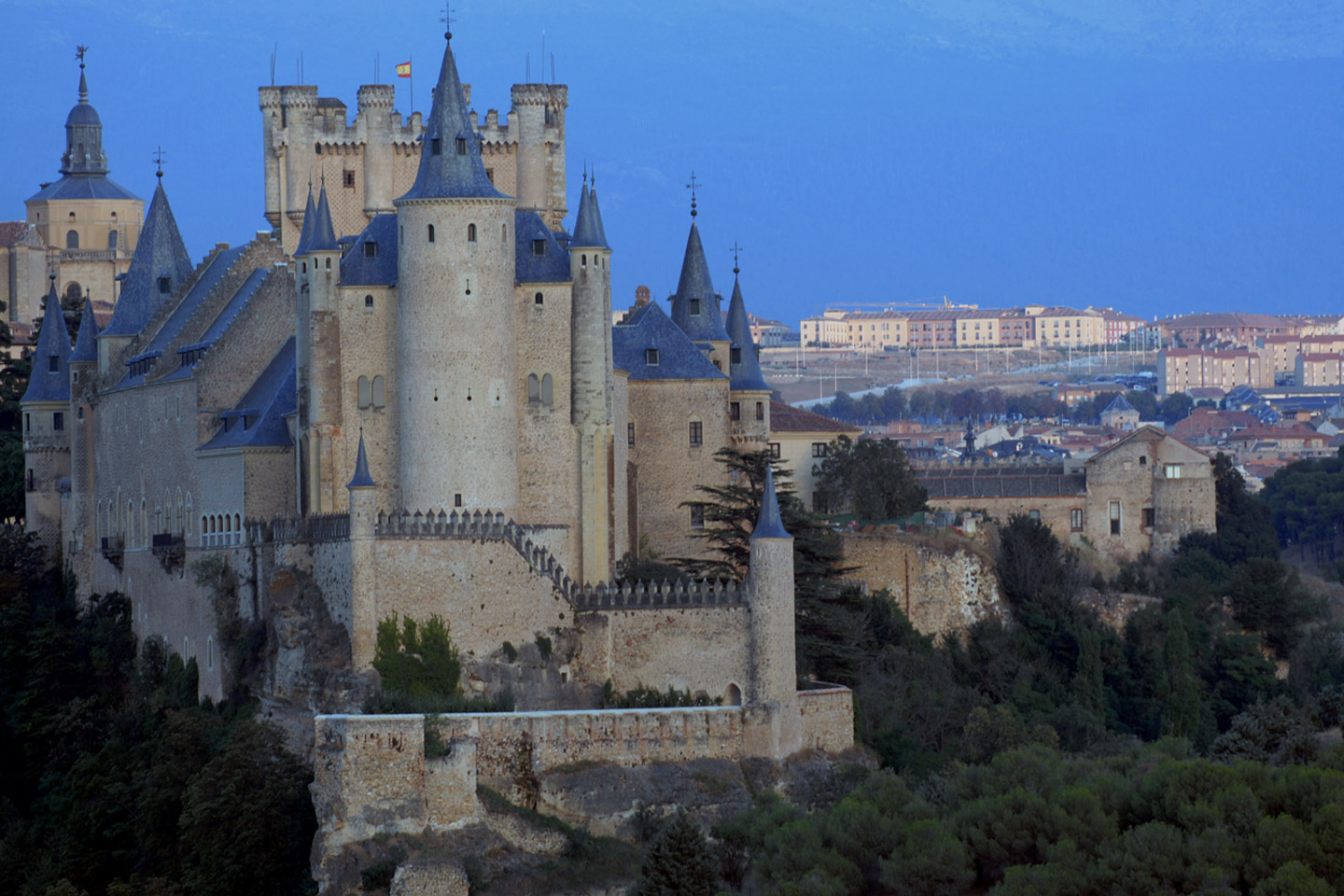Discover the two sides of this magnificent river known as the Douro for some and Douro for others. We could not ignore the great oenological and gastronomic cultures of both regions united by the Douro River and that is why we have elaborated this suggestion of itinerary for the most gourmets. You will enjoy this trip with a perfect mix between rest and guided tours in the city. Of course, you will also become an expert in Spanish and Portuguese wines, and you can also explore their culture.

DOURO RIVER
Day by Day Itinerary and suggested Accommodation
Day 1: Arrival in Porto and private transfer to your hotel. We suggest taking this first day for leisure on your own.
2-night accommodation at The Yeatman *****
Day 2: Full day visit to Porto. In the historic center, considered a World Heritage Site by UNESCO, you will have time to explore the Church of San Francisco, a simple Franciscan Gothic church known today as the "gold cave" demonstrating wealth and power. Next door you will find the Bolsa Palace with incredible works in granite and admirable neo-Arab influences. Walking to the Cathedral, you will have time to admire the famous tiles of the São Bento station. After a visit to the cathedral (12th century), you can admire the Douro River and all the Port Wine Cellars that have brought fame and fortune to the city. But a tour in the city of Porto would not be complete without a visit to one of these wineries. After crossing the bridge D. Luis will begin to feel the aroma of Porto wine that was languidly aged. The huge barrels improve the quality of a wine that can last more than 100 years. During a guided tour of the winery, you will learn about production techniques, wine preservation and aging methods, and understand why Porto wine is one of the most appreciated nectars in the world.
Day 3: Transfer to the Douro Valley. Today our driver will take you to the interior of the Vale do Douro region. This excursion is the perfect opportunity to visit this region calmly, enjoying this wine region. We will start by the small town of Amarante located on the banks of the Tâmega river, where its main attractions are the Church of San Gonçalo and the picturesque bridge. After the visit, the tour will continue to the city of Régua, capital of the Douro region and chosen by the Marquis of Pombal, in the eighteenth century, to be the center of one of the first demarcated regions in the world. This will be the ideal place to visit a Port Wine Estate, carefully selected, where you can admire and taste this exquisite product. Our guide will suggest the best place to have your lunch before continuing to Vila Real and its surroundings. After a panoramic tour along the Douro Valley, you will arrive at the impressive Casa de Mateus, in the surroundings of Vila Real, which was immortalized by appearing on the label of the famous Mateus Rosé. This manor house is a masterpiece of Portuguese Baroque and architect Nasoni and was built in the 18th century for one of the richest families in northern Portugal. After this intense day, our driver will leave you at your hotel amidst the valley.
2-night accommodation at Six Senses Douro Valley *****
Day 4: Free leisure day in the Douro Valley. Optionally we can organize a private boat cruise on the Douro.
Day 5: Transfer to Salamanca. In the morning, our driver will take you from Portugal to Spain crossing the impressive landscapes that make the border between the two countries. Upon arrival at your accommodation. We suggest that you take the day off and enjoy the facilities of this, your Spa and wine therapy treatments, the visit to your winery, etc ...
2-night accommodation at Hacienda Zorita Wine Hotel & Spa *****
Day 6: Visit Salamanca. Salamanca is a dazzling jewel of the beautiful region of Castilla. Climbing the plains, the sandstone architecture of the city and hundreds of years of history will captivate you immediately. Start your day in the heart of the city, in the great Plaza Mayor of Salamanca. Considered the most beautiful square in Spain, this 18th-century public space is a charming repository of Baroque architecture. We will explore many legendary buildings in the city, from the Civil University to the New and Old Cathedrals. Enjoy with our local guide the culture and the gastronomy of the city.
Day 7: Transfer to Madrid with a visit to Ávila. Today in the morning, our driver will take you to your last stop, Madrid, stopping earlier in the medieval city of Ávila, where you can discover the charms of this walled city. Ávila was founded in the 11th century to protect the Spanish territories from the Moors, maintaining its medieval austerity, being a fortified city that still preserves its medieval walls, completely intact. As an outstanding example of medieval architecture and one of the best-preserved walled sites in Europe, Ávila was declared as a World Heritage Site by UNESCO. Within the walls, there is the Cathedral, several Renaissance noble houses and manor houses from the 16th to the 18th centuries. Outside the walls, the Basilica of San Vicente is worth a visit. It was here that Saint Teresa of Jesus began her founding work in the Carmelite order. We suggest taking your lunch in the city without missing the "machaconas" potatoes and the Avileña cow steak. After the visit, the driver will continue to Madrid.
2-night accommodation in Único Hotel *****
Day 8: Free day in Madrid. Enjoy a day off in Madrid to shop in the stately Salamanca district or just stroll along its boulevards, avenues and parks. If you prefer a guide at your disposal, do not hesitate to contact us.
Day 9: Private departure transfer to Madrid Airport. The day of departure has arrived, and your private transport will take you to the International Airport of Madrid. We hope you had a great trip.

CITIES AND TOWNS ON THE ITINERARY
If you wish to know a bit more about the places to go
Porto: At the same time the name of a city and a fortified wine, one of the most famous in the world, aged at the wine cellars of Vila Nova de Gaia, next to the Douro River. Its historical center has been declared a World Heritage Site by UNESCO and preserves many beautiful monuments, namely from the Baroque period which is contemporary to the glory and wealth achieved with the trade of Port Wine. You shall not miss a visit to the Cathedral (Sé), the Church of Saint Francis and the Clérigos Tower.
Douro Valley: Where the terraced hill slopes hide one of the country's most valuable treasures: the beautiful vineyards from where the worldwide famous Port wine is still nowadays produced. Driving through Marão Mountain range get prepared to enjoy one of the most wonderful landscapes in the world, with endless rows of vines dotting the slopes in the banks of the Douro River. We advise you to visit one of the wineries in the region and taking a river cruise.
Salamanca: Salamanca is located in central Spain, around 200km away from Madrid. It is known as the Golden City due to the material used on the construction of its monuments – Villamayor stone. The uniqueness of its artistic characteristics and the fact that by 1250 the University of Salamanca was one of the best academic institutions in Europe led to the designation of the city’s historic center as World Heritage by UNESCO. The University of Salamanca was the first to be founded in Spain and many of the best Spanish thinkers, artists and writers were educated here. Furthermore, it was in this academic city that the first Grammar of the Castilian Language was produced, in the 15th century. Although it is rich in history and heritage, Salamanca is also made modern and young with the presence of all the students.
Ávila: Ávila was founded in the 11th century to protect the Spanish territories from the Moors and it maintains its medieval austerity, being a fortified city with the surrounding walls fully intact. As an outstanding example of medieval architecture and one of the best-preserved walled sites in Europe, Ávila is designated a World Heritage City by UNESCO. Inside the walls, you can find the Cathedral, several renaissance noble houses and stately houses from the 16th to the18th century. Outside the walls, the Basilica of San Vicente is worth a visit.
Madrid: Strategically located in the heart of the Iberian Peninsula, it is the Capital City of Spain and therefore, one of the most touristic and important cities of the country. Because of its central location and high altitude, the climate of Madrid is characterized by warm dry summers and cool winters. Madrid is a city of great monuments. Among its highlights are the medieval center dating back to the Habsburg Empire and the Prado Museum. As the capital, Madrid is home to the Royal family, the Spanish Government and many other national institutions. The town has a long and fascinating history and all over Madrid, there are monuments and museums of great artistical value. It is a city full of life where travelers will feel welcome. Enjoy the street life and the numerous tapas bars and cafes where you will enjoy the “madrileños” passion for life.




